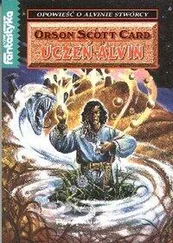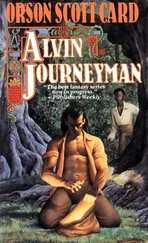The night of October 25, 1967, found him lying on his floor as usual, inhaling the room’s stench—his stench—almost oblivious to the mosquitoes that feasted upon him, when suddenly he heard a key turning in his cell door and guards entered his squalid world. They removed his blindfold and cuffs; they ordered him to roll up his bamboo sleeping mat and gather his few belongings. They helped him to his feet and motioned for him to follow. He hobbled along after them, swinging his left leg outward with each painful stride, trying to maintain his balance.
A guard blindfolded him again for a short ride in a jeep; about eight blocks, he estimated. The blindfold remained fixed in place when the jeep parked and the guards led him toward the sound of a gate opening. He heard voices below him; he guessed there were stairs ahead. He felt for the first step with his stiff leg, found it, and swung his body down to it carefully. He felt for the next step but lost his balance and toppled headfirst, landing in a heap. His drinking cup noisily clattered down the stairs after him. Several hands pulled him to his feet and ushered him to his right. He sensed light, and the hands shoved him toward it. When guards took off his blindfold, he found himself in a dimly lit, windowless concrete box, approximately 9 feet long by 4 feet wide. Another guard entered and clapped 15-pound irons around his ankles, then locked the door and left the prisoner alone.
When Jim surmised nobody was coming back, he picked up his enameled cup and placed its rim against the wall. He pressed his ear against its bottom and with his free hand sent five taps through the wall, rhythmically sounding out “shave and a haircut.”
He heard two taps from the other side, completing the classic jingle. “Two bits.”
With his knuckles working like a woodpecker’s bill, he sent a sequence of two taps, then five; four taps, then three. “JS,” for Jim Stockdale.
In reply, he heard two taps, then five; three taps, then two. Interpreting the taps as fast as telegraph operators once translated Morse code, he knew that navy commander Jim Mulligan, “JM,” occupied the adjacent cell.
During his nineteen months of imprisonment, Mulligan had earned a reputation similar to Stockdale’s. He took a hard line against the Camp Authority, refusing to cooperate in any manner—at least until Pigeye used his ropes. Mulligan had helped Stockdale run the camp’s underground resistance and had suffered for it, but the beatings and solitary confinement never deterred him. The Camp Authority considered him a leader and therefore a problem.
Now the prison commandant—known as Cat—had locked these two troublemakers away together, along with other prisoners that Stockdale and Mulligan heard shuffling into nearby cells during the night. The next morning they would discover nine other American stalwarts imprisoned with them: senior officers Jeremiah Denton, Harry Jenkins, and Howie Rutledge; troublemakers Sam Johnson, Bob Shumaker, and Nels Tanner; and young antagonists George Coker, George McKnight, and Ron Storz.
Stockdale remembered Rabbit, one of Cat’s underlings, issuing a threat over the Hanoi Hilton’s speaker network several months earlier. In shrill tones, he’d denounced the leaders of the American resistance and promised he was preparing “a dark place” for the “darkest criminals who persist in inciting the other criminals to oppose the Camp Authority.”
The Camp Authority, he knew, saw him as the ringleader of those “criminals.” He feared he and his most loyal lieutenants had now been brought to that dark place, a dungeon designed to break their bodies and crush their souls, meant to punish and neutralize the eleven POWs Cat considered the most subversive.
Jim Stockdale and his ten compatriots had arrived at Alcatraz.
1
BLACK SEA AND AMERICAN FIREPOWER
Even at 43,000 tons and nearly three football fields in length, the USS Ticonderoga rolled with the swells of the South China Sea. She had cruised the waters of the Pacific Ocean for more than twenty years now, surviving a 1945 kamikaze attack off Taiwan and steaming victoriously into Tokyo Bay six months later. In the summer of 1964, Ticonderoga had deployed to monitor a new conflict in Asia—one between Communist North Vietnam and the American-allied government in the South. Should the growing unrest finally draw America into war, she would respond with her force of more than fifty modern aircraft.
The carrier’s flight deck resembled the busiest of airports, as if the substantial traffic and activity at O’Hare or LaGuardia were compressed onto a 2-acre expanse of concrete surrounded by a 52-foot cliff. Idle planes sat chained mere feet away from the ship’s narrow landing strip. In between aircraft recoveries, taxiing jets laden with fuel and bombs jockeyed toward the two forward catapults that sent aircraft screaming off the bow, bathing everything behind them with heat, noise, and thick exhaust. Among the jet blasts and spinning propellers scurried men in grease-smudged pants and shirts of every color. Some lugged heavy chains, others pushed carts of ordnance, all shared a common mission.
Commander Jim Stockdale landed amid this chaos on August 4, 1964. He taxied to a stop, shut down the engine of his Vought F-8 Crusader, and climbed out of its single-seat cockpit. He stepped down the ladder to the deck and gazed west into the sunset. Then he watched distant lightning flicker to the north, over the Gulf of Tonkin. Hungry after a long day of patrols, he headed below deck for dinner, away from the noise and commotion.
The ship’s wardroom was testament to the adage that if a navy man gave his life for his country, he’d die clean and well fed. Stewards served dishes of hot food to officers seated at linen-covered tables. A mess officer made sure everyone maintained decorum. If an aviator had already flown his missions for the day, as Jim had, a hot shower might follow the evening meal. Later, each would fall asleep in shared staterooms. Squadron commanders—known as skippers—like Stockdale often rated a room to themselves. Regardless of their rank or roots, these naval aviators—most of whom had yet to see age thirty-five, and many younger than thirty—shared a certain confidence.
That armor was forged by surviving flight after flight and beating the grim statistics of midcentury military aviation. At the outset of flight training, many instructors warned students that their aircraft would try to kill them. Many planes succeeded. In 1956 alone, naval aviation lost 776 aircraft and 535 lives. One study gave career aviators a 23 percent chance of dying in a crash. Another offered even odds that they’d eject before they retired, an unpleasant prospect given the severe injuries pilots often sustained when blasted out of their cockpits and into an unforgiving airstream. Then the pilot could only hope his parachute would open correctly and prevent a tragic freefall.
Yet despite these risks, a certain breed of man still volunteered, men who believed they could meet any challenge and hungered for the chance to prove it. Jim Stockdale knew too many who’d died amid smashed metal and hot-burning wreckage, but he believed that he would avoid that fate; he would return. Through a combination of heavenly grace, raw talent, and navy training, he controlled his airplane and his destiny. Those that perished had made some mistake, had committed some error, had not lived up to the standard. Stepping into a jet cockpit on the pitching deck of an aircraft carrier required trust in self and machine as well as a belief in the former’s dominance over the latter. He, just like everyone else in the wardroom, thought he could control the uncontrollable.
After dinner, Jim retired to Fighter Squadron 51’s briefing room, where fewer rules of etiquette applied. These rooms were the domain of the ship’s aviators and seemed like both an office and a fraternity house. In the room’s red lighting, Jim relaxed as pilots often do—by talking about flying. Suddenly, he heard propellers turning on the flight deck: A-1 Skyraiders. Just as he began wondering why Ticonderoga had decided to launch aircraft at this late hour, an officer from the ship’s Combat Information Center opened the ready room door and asked Jim, “Are they ready to go?”
Читать дальше












